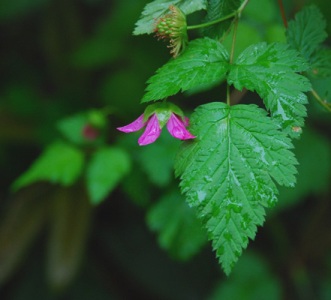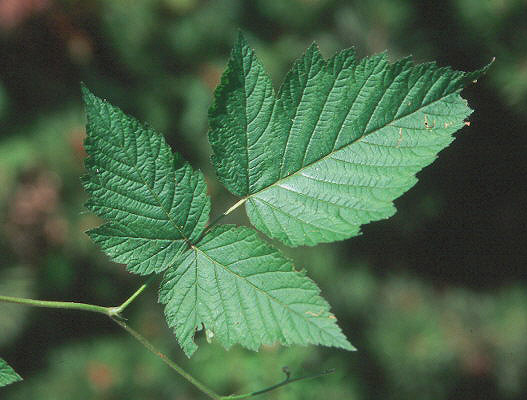Nutrition
Rubus spectabilis is an autotrophic organism, meaning it produces its own food. It acquires nutrients from the soil with the use of its roots. Also, these roots, which are a minimum of ten inches, take up water from the wet soil. This water is used in photosynthesis along with sunlight and Carbon Dioxide to eventually produce glucose and oxygen.
| Photo courtesy of Pat Breen, Oregon State Univ. |

Leaf and flower of Rubus Spectabilis
The process of
photosynthesis is actually quite complicated
and primarily takes place in the leaves. Once the water is
pulled up by tissues called xylem, it is transported to
different areas of the plant. Plants contain stomata, which are
tiny openings that allow substances in and out of the plant.
Carbon dioxide enters through the stomata and goes to the cells
that contain chlorophyll. The water taken in is broken down by
the sunlight and hydrogen is used to make glucose(sugar) for the
plant. Phloem tissues take the sugar produced and transport it
to the various parts of the plant for food storage. Oxygen is
also produced, which is released through the stomata.
Salmonberries serve as a host to many other organisms. As they mature, they begin to fruit an aggregate of drupelets that are usually salmon colored to reddish purple. These drupelets are food to the other animals. Salmonberries have mutualistic relationship with these other animals. As the animals eat the berries from the plant for food, they digest them and spread the seeds of this plant to other areas.
| Photo courtesy of Pat Breen, Oregon State Univ. |

| Leaf, where photosynthesis takes place |
<---- Previous Page Home Page Next Page ---->